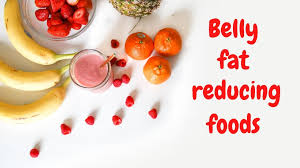Healthy Eating Basics

Living a healthy, balanced diet is one of the most important things you can do for your health. In fact, up to 80% of heart disease and stroke can be prevented through lifestyle choices and habits like healthy eating basics a healthy diet and physical activity.
Eating a healthy diet helps to:
- Lower your risk of heart disease and stroke by improving your cholesterol levels
- Help keep your blood pressure at a normal level
- Keep your weight stable
- Regulate your blood sugar.
What does a healthy, balanced diet look like?

Canada’s Food Guide suggests several healthy foods a day. These include Healthy Eating basics plant-based foods more often and choosing highly processed or ultra-processed foods less often.
Healthy diet
Eat plenty of vegetables and fruit
- This is one of the most important diet habits. These foods are packed with nutrients (antioxidants, vitamins, minerals, and fiber) and will keep you satisfied for longer periods, helping you to maintain your healthy eating basics weight.
- Fill half your plate with vegetables and fruit at every meal and snack.
Choose whole grain foods
- Whole grain foods contain all whole grain bread and crackers, brown or wild rice, quinoa, oatmeal and hulled barley. In the preparation of whole grain foods, the entire grain is used. Whole grain foods contain fiber, protein and B vitamins to keep you healthy longer.
- Use whole grain alternatives rather than processed or refined grains such as white bread and pasta.
- Put a quarter portion of your plate with whole grain food.
Consuming protein foods
- Protein foods include: Legumes, nuts, seeds, tofu, fortified soy beverage, fish, shellfish, eggs, poultry, lean red meats including wild game, lower fat milk, lower fat yogurts, lower fat kefir and cheeses lower in fat and sodium. Protein helps build and repair bones, muscles, and skin. All adults should consume protein daily. Try to eat at least two servings of fish a week, and most of your protein choices should be plant-based.
- Dairy foods are a good source of protein. Choose lower fat, unflavored types.
- Use one quarter of your plate for protein foods.
Limit highly and ultra-processed foods
- Highly processed foods-also known as ultra-processed-are foods that undergo significant changes from their original food source and have many added ingredients. Often during processing, nutrients such as vitamins, minerals, and fiber are removed while salt and sugar are added. Examples of processed food: fast foods, hot dogs, chips, cookies, frozen pizzas, deli meats, white rice and white bread.
- A few minimally processed foods are okay. These are foods that are slightly altered in some way but contain few industrially manufactured additives. Minimally processed foods retain nearly all of their essential nutrients. Examples include bagged salad, frozen vegetables and fruit, eggs, milk, cheese, flour, brown rice, oil and dried herbs. By minimally processed foods, we are not suggesting that you avoid those foods when we tell you to avoid processed foods.
- Recently published research funded by Heart & Stroke showed that 47 percent of the diet of Canadians consists of ultra-processed foods. Read more about it here.
Sticking to water as your go-to beverage
- Apart from helping you maintain health and hydration, water doesn’t have any calories added to your diet.
- Sugary drinks include energy drinks, fruit drinks, 100% fruit juice, soft drinks, and flavored coffees. These contain much sugar and very little nutrition; they can be consumed in the background without much attention to result in weight gain.
- Avoid fruit juice, even when it is labeled 100% fruit juice. Fruit juice has some benefits of the fruit (vitamins, minerals), but it contains more sugar than the fruit and less fiber. Fruit juice should not be consumed in place of fruits. Canadians should eat their fruits, not drink them.
- If the water is not safe to drink, use coffee, tea, and unsweetened lower-fat milk or previously boiled water to quench your thirst.
Top 5 experts’ tips
- Cook most of your food at home using whole or minimally processed foods. Choose several options for different proteins and mix it up. Prepare exciting names for each day. Try “Meatless Monday” with this meatless recipe.
- Plan a meal each week; this is where the magic happens for fast, easy meal prep. For additional shopping tips, see here.
- Select recipes that provide many fruits and vegetables. Your goal is to fill half of your plate with fruits and vegetables for every meal. Choose brightly colored fruits and vegetables each day, especially orange and dark green vegetables (click here for more information). Frozen or canned unsweetened fruits and vegetables are an excellent substitute for fresh fruits and vegetables. Try this recipe.
- Avoid sugary drinks and drink water instead. Lower-fat, unsweetened milk is a good rehydration too. Keep a reusable water bottle in your purse or car so you can fill up wherever you go.
- Eat more frequent smaller meals. Have at least three meals per day with snacks between them. The longer you wait to eat the worse you will likely be able to eat. Keep these quick-to-eat snacks in your purse or bag for emergencies.
Related information
Tips for Healthy Lifestyle: https://todayzfeed.com/tips-for-healthy-lifestyle/
10 Simple Exercise Routines for Beginners to Kickstart Your Fitness Journey: https://todayzfeed.com/10-exercise-routines-for-beginners/





























